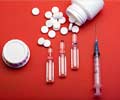- Generic immunosuppressants can help reduce transplant costs
- Significant cost savings for both transplant patients and Medicare has been observed after the use of generic immunosuppressants
- Results of a new research will help in discussion around universal coverage of immunosuppressive medications for transplant patients
Read More..
Need for Generic Immunosuppressants
All organ transplantation recipients are required to take life-long immunosuppressive medications in order to prevent organ rejection. In the United States, Medicare, the federal health insurance programme is presently able to provide coverage for immunosuppressive medication only for 3 years after a kidney transplant surgery. Thereafter, the patients have to pay on their own, and these out-of-pocket medication expenditures could be significantly higher. Such high costs could lead to some patients not filling out their prescriptions, thereby facing poor health outcomes. Tacrolimus and Mycophenolate are the most commonly used immunosuppressive medications in the U.S. Generic formulations of these drugs were introduced a decade ago, with the probability of cost reduction for transplant recipients and insurance payers.The Cost Factor
Margaret E. Helmuth and her colleagues, part of the Arbor Research Collaborative for Health, have attempted to examine the impact of the generic variations of immunosuppressants on the costs borne by patients and Medicare.The team assessed the cost savings for both transplant patients and the Medicare Part D programme, when the medications were substituted with generic variants. The average annualized payments of the Medicare Part D plan, Medicare Part D low-income subsidy plan and the out-of-pocket payments by the patients for both the brand-name and generic variants of Tacrolimus and Mycophenolate were compared.
Details of the Study
The immunosuppressant medication costs for patients who received a kidney, liver, or heart transplant between 1987 and 2013 and those who filled prescriptions for Tacrolimus or Mycophenolate, through Medicare Part D between 2008 and 2013 were analyzed by the research team.Over 5 years of the study, across 3 organs and 2 drugs, the team found an overall decrease in payments for both patients and Medicare.
For patients not receiving the low-income subsidy, there was a decline in payments by 63 percent-79 percent and 24 percent-44 percent for those receiving the subsidy. In the Medicare Part D plans there was a decrease by 48 percent-67 percent.
The research team observed that there was a decline of $1,000 to $1,750, between 2008 and 2013, in average out-of-pocket payments, per patient in transplant recipients who did not receive the low-income subsidy, depending on the organ type and drug.
On the other hand, for the Medicare programme, the savings were around $1,500 to $4,500 between 2008 and 2013, per patient, per year in Part D plan payments. In addition to this, in the same period, there were savings of $400 to $1,500 per low-income subsidy patient per year.
Observations of the Study
The average yearly out-of-pocket payments for immunosuppressive medications were found to be varying significantly between the Part D beneficiaries who qualified for the Medicare low-income subsidy and those who did not. This finding may imply that recipients, who are just above the limit to qualify for the subsidy, may face extensive financial strain.Margaret Helmuth remarked, “The debate regarding universal coverage of immunosuppressive medications for transplant recipients has been ongoing for more than 30 years.” On the relevance of the research, she added, “We believe that this research will help inform ongoing national discussions about the funding of post-transplant immunosuppressive medication coverage.”
Cher Thomas, RDH, a kidney transplant recipient who celebrated her twentieth transplantation anniversary, also made an observation in a Patient Voice editorial that accompanied the research article. In the early months after the kidney transplant, for a single medication, that was not even an immunosuppressant, her copay was $500. After she started taking the generic variations of the medications, she has been able to save significantly.
Ms. Thomas had also commented on the study's design and findings and the role of insurance companies in making decisions related to choosing generic medicines that could be prescribed for patients.
Reference:
- Secular Trends in the Cost of Immunosuppressants after Solid Organ Transplantation in the United States - (https://cjasn.asnjournals.org/content/early/2019/02/27/CJN.10590918/)
Source-Medindia











